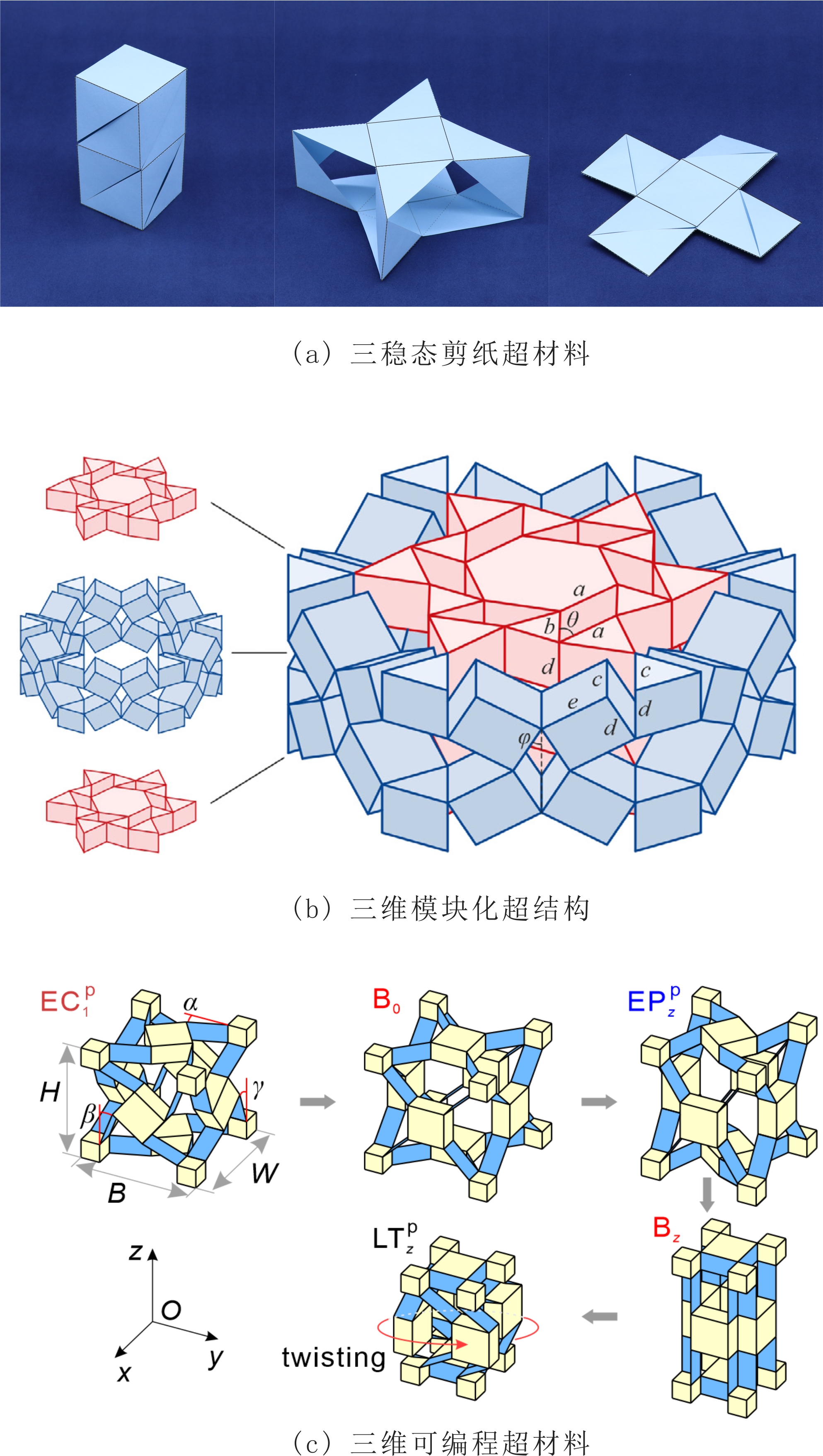Research
Team
Publications
News
|
New Publication: Review on origami kinematics
From: Date: 2023-03-28 Origami is no longer a folk art with the development of origami engineering in this century, in which a lot of previous work of mathematicians has surfaced and the engineering applications present new challenges to describe the folding process of rigid origami. Meanwhile, origami is not limited to the thin sheet, the folding and unfolding of thick panels have always hindered their related engineering applications. Recently, the development of metamaterials has brought a leap from toys to high technology for modular origami. How to coordinately set up the origami modules to enable the entire structure with excellent and tunable performance is a new hotspot in modular origami. Hence, origami kinematics has played a decisive role in many applications and explorations. This review focuses on the developed mechanism theories and their applications in the analysis and design of rigid origami, thick-panel origami, modular origami (Table 1), which hopefully could be able to provide the theoretical foundation for origami engineering. 表1 折纸运动学理论方法在各类折纸结构中的应用
As shown in Fig. 1, taking the spherical mechanism and its assembly as the basic kinematic model, vector method, quaternion method, D-H matrix method, screw method, and numerical algorithm and program method combined with truss method and SVD provide effective means for accurately describing the complete folding process and innovative design of rigid origami. Among them, D-H matrix method has been adopted by many studies due to its intuitive and efficient advantages, and can be used in the analysis of thick-panel origami and modular origami. Further, the numerical algorithms combining matrix method, screw method, truss method, and SVD are powerful tools for the analysis and design of these spatial origami structures. Fig. 1 Theoretical methods in origami kinematics In addition, the multi DOF and bifurcation behavior caused by spherical and spatial mechanisms, as well as the introduction of kirigami structures, derive the origami structures have more abundant folding characteristics, and play an important role in the design of reconfigurable folding structures and large deformation metamaterials. For the controllable deformation mode of large deformation metamaterials, a metamaterial deformation mode based on mechanism motion has been formed, and it is referred to as kinematic metamaterials (taking Figure 2 as an example). The design of metamaterials based on flexible mechanism cells enables the deformation of metamaterials to be generated according to the mechanism motion. Therefore, rigorous modeling and motion simulation play a crucial role in the deformation design and performance analysis of kinematic metamaterials. Fig. 2 Kinematic metamaterials There is a deviation between the actual folding path of an origami structure and the ideal mechanism motion path. Therefore, in the design of origami structures, especially large deformation metamaterials, it is necessary to consider the deformation energy and folding behavior in a unified theoretical framework, usually using the kinematical and mechanical coupling methods of flexible mechanisms for kinematic deformation analysis. It is necessary to ensure that the deformation mode is consistent with the motion mode of the theoretical mechanism from a dynamic perspective. Hence, kinematics provides a theoretical basis for the design and analysis of origami structures, and interdisciplinary research is also needed in various engineering applications to promote the origami engineering.
Chen Y, Gu Y Q. Review on origami kinematics. Advances in Mechanics, 2023, 53(1): 1-44 |


